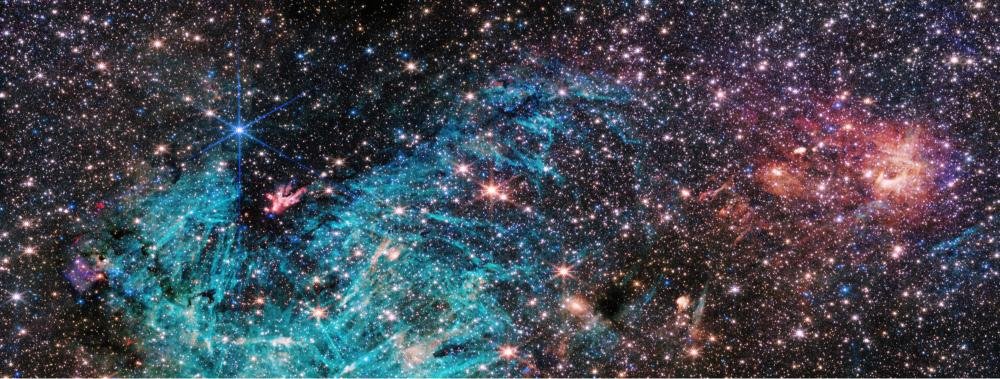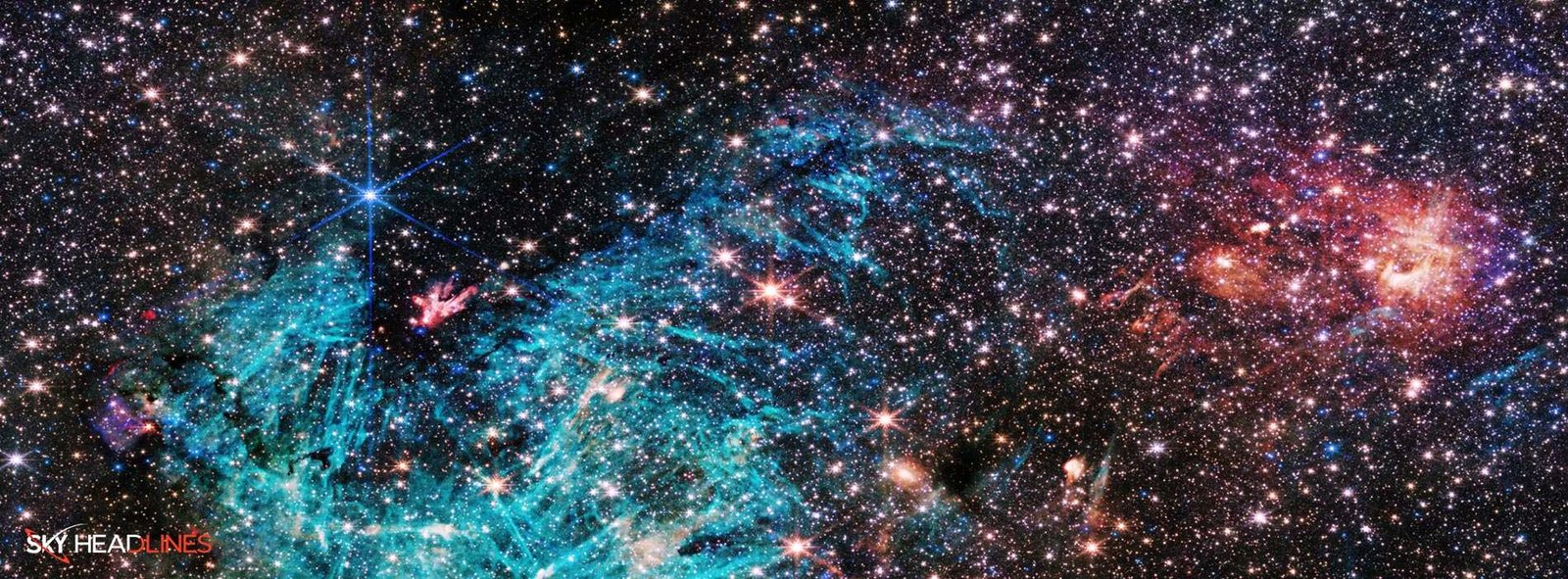Introduction
The dazzling celestial tapestry of our night sky is adorned with countless stars, each with its unique tale of creation and evolution. But have you ever wondered how these celestial luminaries come into existence? In this article, we delve into the fundamentals of Protostars, exploring their formation through gravitational instability and their distinctive characteristics. Additionally, we’ll uncover the latest discoveries from NASA’s James Webb Space Telescope, shedding light on star formation in the heart of our galaxy.
The Birth of Protostars
To understand Protostars, we must first grasp the fundamental process of star formation. Stars, those luminous beacons that dot the night sky, are born from vast clouds of gas and dust in space. These clouds, often called molecular clouds, are composed primarily of hydrogen molecules, with traces of other elements.
Gravitational Instability
The process begins when a region within a molecular cloud becomes gravitationally unstable. Multiple factors can induce this instability, including shockwaves emanating from a nearby supernova detonation or the compression resulting from the collision of two molecular clouds. When the cloud becomes unstable, it starts to collapse under the relentless pull of gravity.
Protostellar Core Formation
As the molecular cloud collapses, it fragments into smaller clumps, each of which will eventually give rise to a single star. These clumps are known as Protostellar cores. Within these cores, gas and dust are drawn together by gravity, forming a dense and compact region at the center. It is within this core that the protostar begins to take shape.
Protostars Characteristics
Protostars are not yet fully-fledged stars; they are in a transitional phase between a collapsing cloud and a mature star. During this stage, they exhibit several distinctive characteristics.
Accretion Disk
As material falls onto the protostar from the surrounding Protostellar core, it forms an accretion disk. This disk is a flattened structure of gas and dust that spirals onto the protostar. The material in the accretion disk gradually spirals inward due to gravitational forces, providing the protostar with the necessary mass to eventually become a star.
High Temperatures and Pressure
While Protostars are not yet generating energy through nuclear fusion, they still heat up as they accrete material. The compression of gas and dust in the core of a protostar raises temperatures and pressures to extreme levels. However, these conditions are not sufficient for sustained nuclear fusion, which is the defining characteristic of a true star.
Intense Stellar Winds
Protostars also emit intense stellar winds. These winds result from the energy released as material falls onto the Protostars surface and collides with existing matter. These winds possess the potential to significantly impact the surrounding environment, exerting their influence on the behaviors of neighboring gas and dust clouds.
Evolution of Protostars
The life cycle of a protostar can be divided into several stages as it gradually evolves into a mature star. During this evolution, Protostars are not isolated entities; they are part of complex and dynamic environments within galaxies. The most recent picture captured by NASA’s James Webb Space Telescope provides a peek into a particular setting: the densely populated core of our galaxy.

The Galactic Center Unveiled
The center of our Milky Way galaxy is a remarkable and extreme environment, where current theories of star formation face their most rigorous tests. Here, the James Webb Space Telescope has granted astronomers a fresh viewpoint. Within this image, we glimpse a fragment of the galactic center, highlighting the star-forming area called Sagittarius C (Sgr C). This region resides about 300 light-years away from the central supermassive black hole known as Sagittarius A*.
Samuel Crowe, an undergraduate student at the University of Virginia in Charlottesville, has been leading a team of astronomers who are amazed by the remarkable level of detail and sensitivity provided by Webb’s infrared observations. The image uncovers features never seen before in this region, shedding light on star formation processes in an environment previously inaccessible to researchers.
“The galactic center is the most extreme environment in our Milky Way galaxy, where current theories of star formation can be put to their most rigorous test”
Added Professor Jonathan Tan, one of Crowe’s advisors at the University of Virginia.
Protostars in the Cosmic Crucible
Among the approximately 500,000 stars captured in the Webb image, a cluster of Protostars takes center stage. Protostars are stars that are still in the process of forming and accumulating mass. In this image, they appear as outflows glowing amidst an infrared-dark cloud. At the heart of this young cluster lies a massive protostar, known previously, but now seen with newfound clarity, boasting a mass exceeding 30 times that of our Sun.
The cloud’s density, from which these Protostars originate, is so substantial that it conceals the light emanating from stars situated behind it. This gives rise to the deceptive impression of a less congested region when in reality, it stands as one of the most densely populated areas within the image. Smaller infrared-dark clouds also punctuate the scene, resembling holes in the starfield—these are the locations where future stars are in the process of formation.
Intriguing Discoveries and Further Investigations
Webb’s Near-Infrared Camera (NIRCam) instrument has not only provided a glimpse of Protostars but has also captured large-scale emission from ionized hydrogen enveloping the lower side of the dark cloud, depicted in cyan in the image. Typically, such ionization results from energetic photons emitted by young massive stars. However, the extensive reach of this region as revealed by Webb has raised questions, warranting further exploration.
Moreover, within this dynamic and crowded galactic center, Webb has unveiled needle-like structures within the ionized hydrogen. These structures appear to be oriented chaotically in various directions, presenting another intriguing avenue for scientific investigation.
“The galactic center is a crowded, tumultuous place. There are turbulent, magnetized gas clouds that are forming stars, which then impact the surrounding gas with their outflowing winds, jets, and radiation,”
Explains Rubén Fedriani, a co-investigator at the Instituto Astrofísica de Andalucía in Spain.
“Webb has provided us with a ton of data on this extreme environment, and we are just starting to dig into it.”
A New Window into Cosmic Evolution
Situated approximately 25,000 light-years away from Earth, the galactic center presents a proximity that enables astronomers to examine individual stars using the Webb telescope. Astronomers closely observe the galactic center, gaining exceptional insights into the mechanisms of star formation. They seek to understand how the distinctive cosmic conditions in the galactic center might affect these mechanisms. Comparisons with star formation in other regions of the galaxy will help answer questions about the prevalence of massive stars at the galactic center compared to the galaxies’ outer spiral arms.
“The image from Webb is stunning, and the science we will get from it is even better,” Remarks Samuel Crowe.
“Massive stars are factories that produce heavy elements in their nuclear cores, so understanding them better is like learning the origin story of much of the universe.”

The Role of Protostars in Cosmic Evolution
Protostars are crucial actors in the cosmic drama, impacting the creation of planetary systems and molding the nearby interstellar environment.
Planet Formation
One of the notable outcomes of the formation of Protostars is the emergence of protoplanetary disks, which are flat, spinning structures composed of gas and dust encircling newly formed stars. Within these disks, solid particles collide and coalesce, gradually building larger and larger objects. With time, these entities can transform into celestial bodies such as planets, moons, asteroids, and comets. The examination of Protostars and their accompanying protoplanetary disks offers valuable knowledge about the creation and variety of planetary systems.
Feedback on the Interstellar Medium
Protostars have a profound impact on their immediate surroundings. Their intense stellar winds, radiation, and outflows of material create turbulent environments in the interstellar medium. These processes can trigger the formation of new stars in nearby regions or disrupt the structure of nearby molecular clouds. The feedback from Protostars is a crucial factor in the dynamic and ever-changing nature of the cosmos.
Stellar Populations
Observing Protostars
Observing Protostars can be a challenging task due to their embedded nature within dense clouds of gas and dust. However, astronomers have developed innovative techniques and instruments to study these cosmic nurseries.
Infrared and Submillimeter Observations of Protostars
Protostars emit a significant amount of their radiation in the infrared and submillimeter portions of the electromagnetic spectrum. These longer wavelengths are less affected by dust extinction and allow astronomers to penetrate the surrounding clouds and observe the Protostars within. The Spitzer Space Telescope and the Atacama Large Millimeter/submillimeter Array (ALMA) equip infrared and submillimeter detectors. They have been crucial in examining Protostars and their surrounding environments.
Radio Astronomy
Radio telescopes are also essential tools for observing Protostars. To study deeply embedded protostars, wavelengths longer than those of infrared and submillimeter radiation, such as radio waves, are ideal due to their ability to penetrate thicker dust layers. Radio observations provide insights into the magnetic fields, outflows, and the composition of the gas and dust enveloping the protostar.
Multiwavelength Studies
Astronomers often combine data from multiple wavelengths to create a comprehensive picture of Protostars. This approach allows them to explore the various physical processes occurring within and around Protostars, from the dynamics of their accretion disks to the chemistry of their surroundings.
Conclusion
Protostars are celestial enigmas, representing the birth of stars and influencing cosmic evolution. With the James Webb Space Telescope’s revelations, we glimpse the cosmic crucible of the galactic center, where Protostars take center stage. Their role in planet formation, impact on the interstellar medium, and contribution to stellar populations continue to captivate astronomers. As we probe these cosmic wonders through innovative observations, the story of Protostars enriches our understanding of the ever-evolving universe, reminding us of the cosmos’ endless fascination and wonder.





